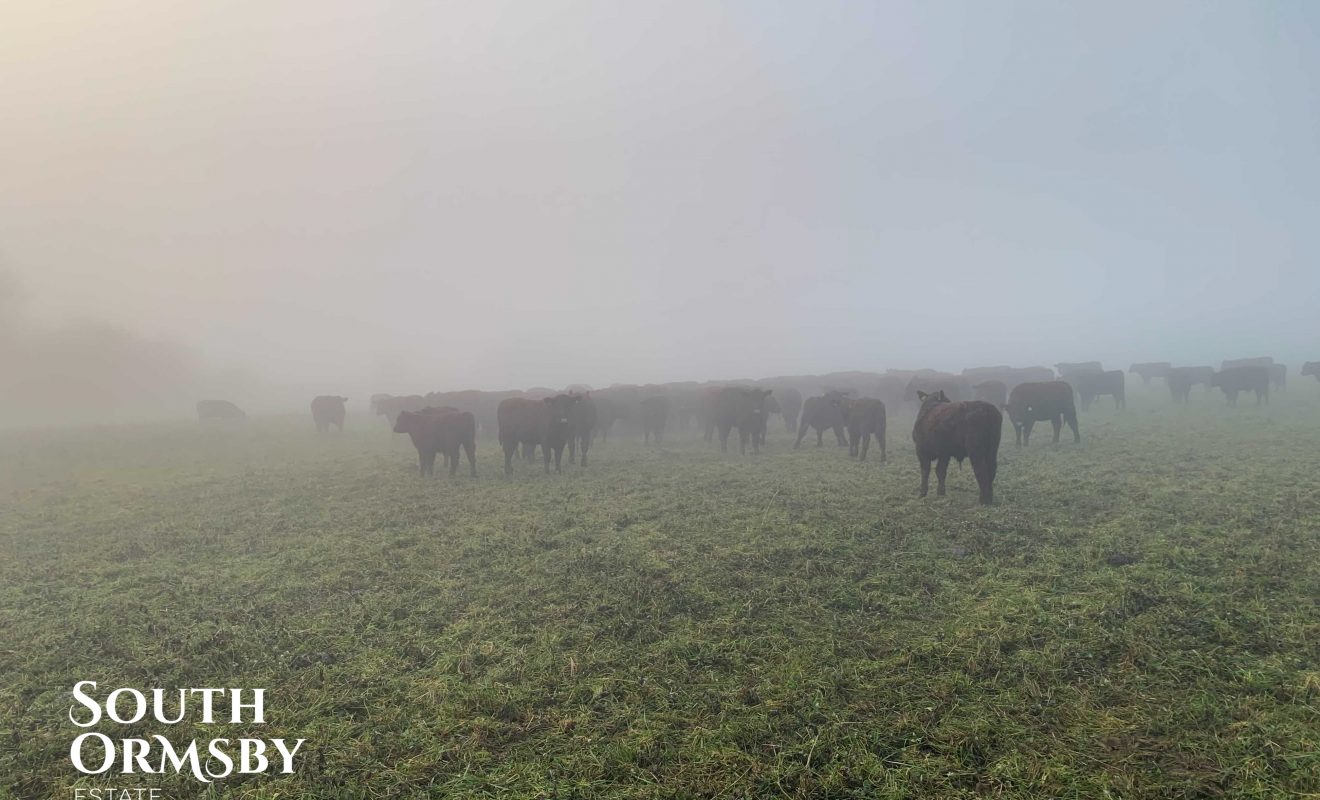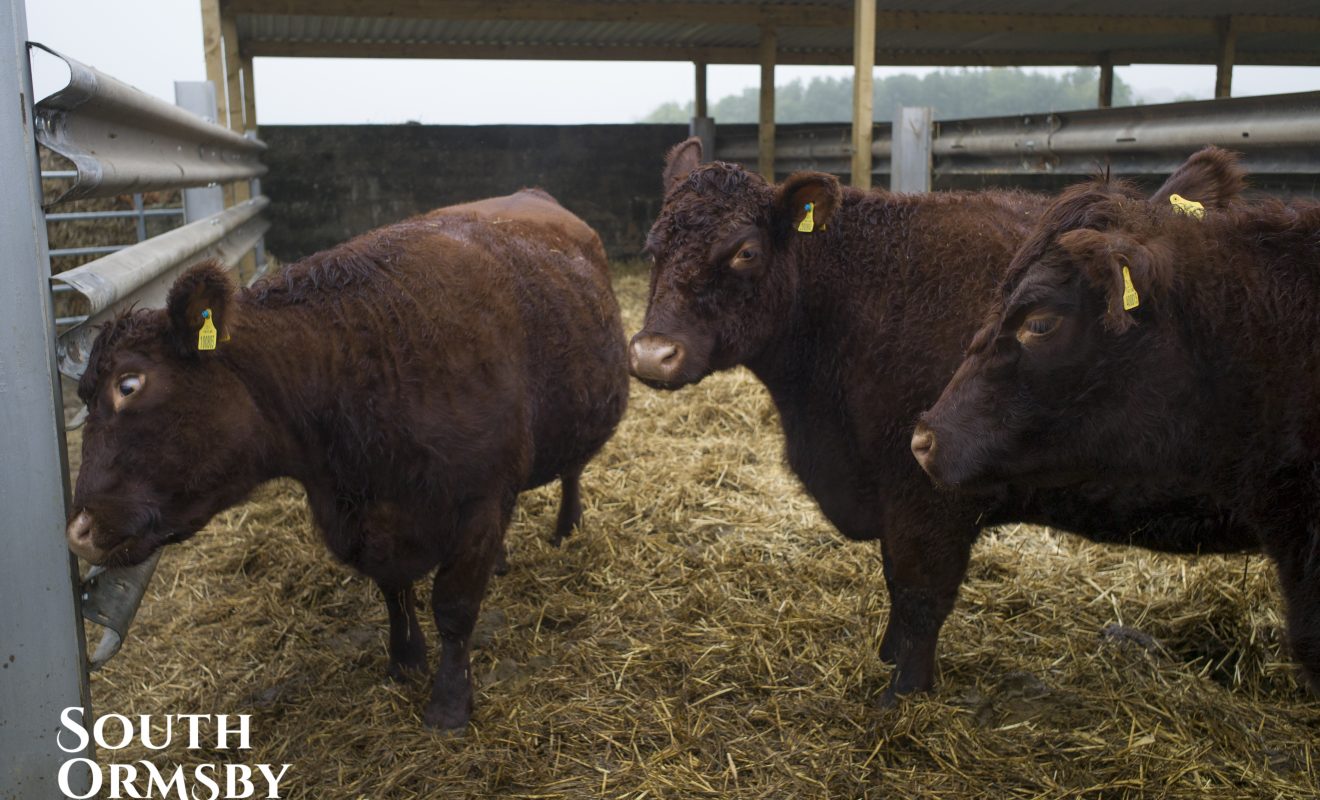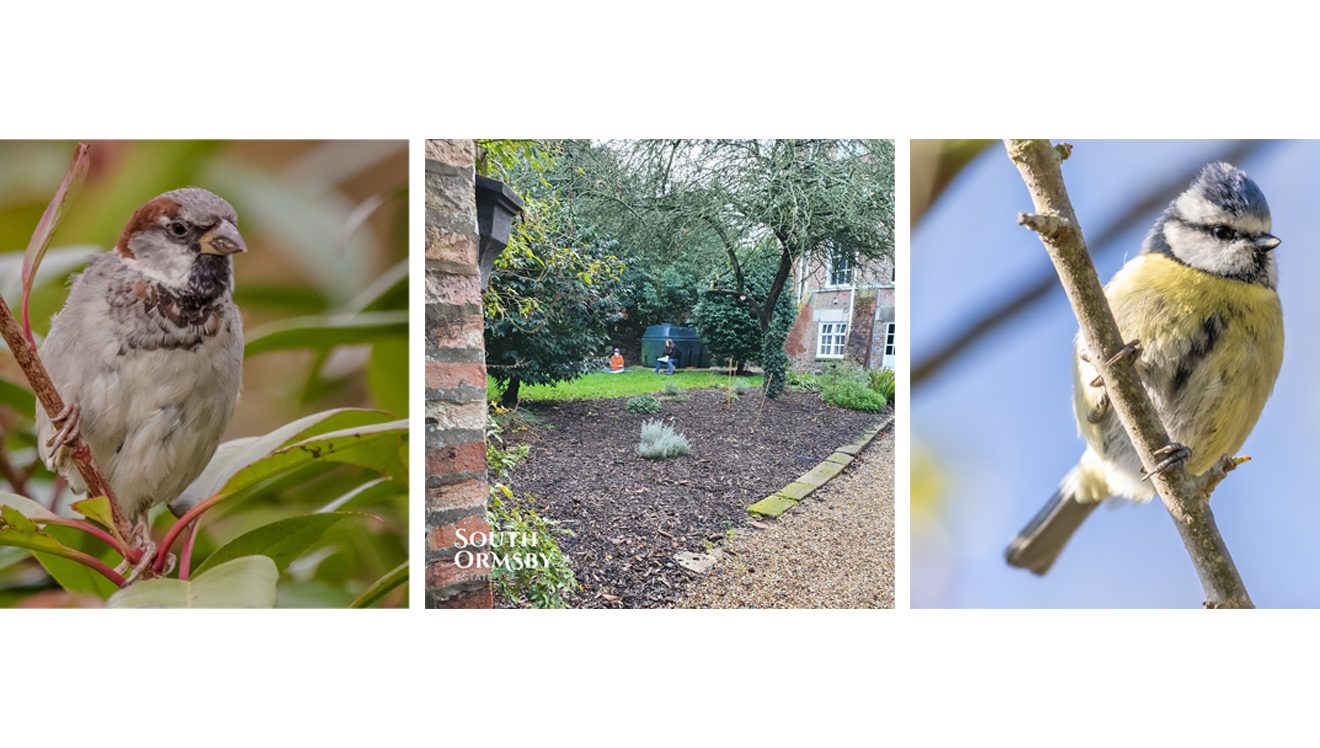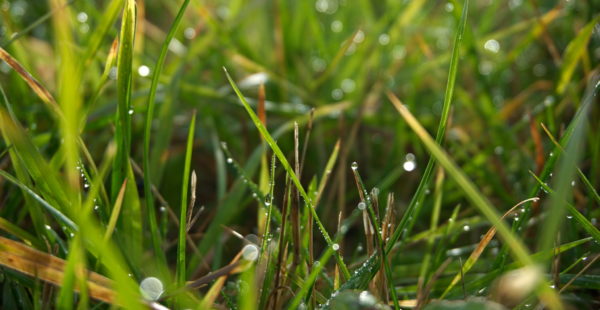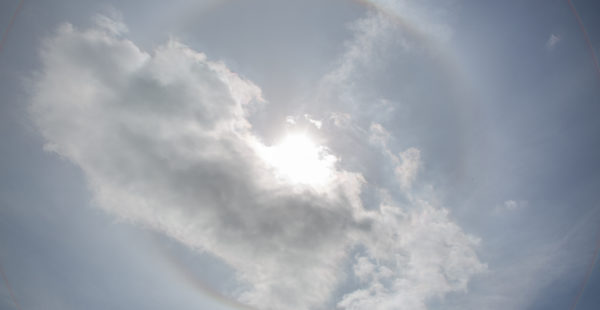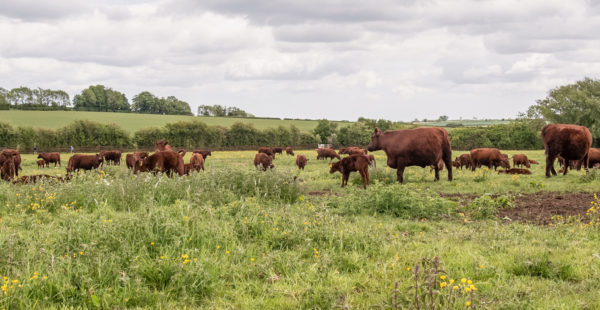A Week on the Estate: Reds into Keal, Chickens into Coops & Counting Birds
We’re about to reach one of our seasonal milestones – the coldest and darkest time of year when the Lincoln Red herd moves into its winter quarters until the spring.
After a lot of rain last week, the Lincoln Reds have finished all their crunchy kale and the juiciest clover. With the coldest and darkest months upon us, it’s time to bring the herd into Keal Yard. With their thick woolly coats and plenty of lush pasture to explore, the cows would probably like to stay outside a tad longer.


